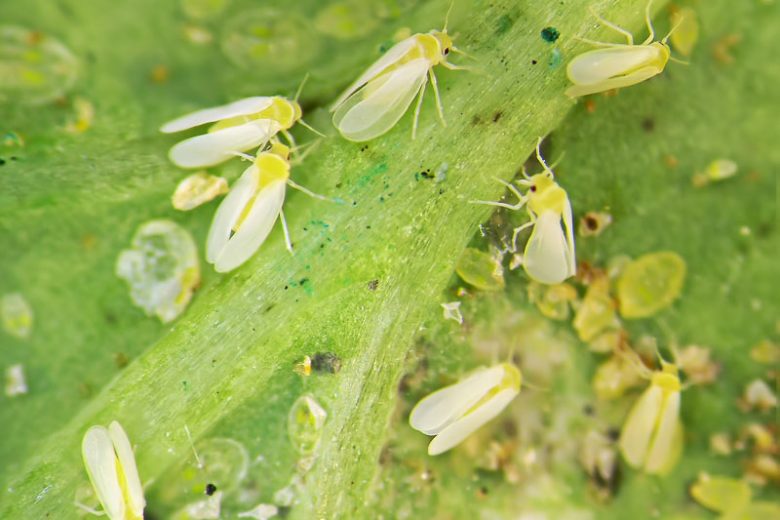Pests
How Do I Get Rid Of White Flies On Plants?
White Fly
Whiteflies are small, winged insects that belong to the Aleyrodidae family, closely related to aphids and mealybugs. They are typically found on the undersides of leaves and are known for their powdery white appearance. Whiteflies feed on plant sap, which can weaken and damage the host plant. They are capable of rapidly reproducing in warm environments, making them a notorious pest in both indoor and outdoor gardens.
Whiteflies cause harm by sucking the sap from plants, leading to yellowing leaves, stunted growth, and eventually, the death of the plant if left uncontrolled. Additionally, as they feed, whiteflies excrete a sticky substance known as honeydew, which can lead to the growth of sooty mold on the leaves. This mold further inhibits the plant’s ability to photosynthesize effectively.
They are also vectors for several plant viruses, contributing to the spread of diseases across gardens and greenhouses. Due to their ability to rapidly reproduce and become resistant to pesticides, whiteflies are considered challenging pests to manage and control.
Getting rid of whiteflies requires a combination of mechanical, biological, and chemical methods, especially in severe infestations. Here’s a step-by-step approach:
-
Isolate Infected Plants: Prevent the spread of whiteflies by isolating the affected plants if you’re dealing with an indoor garden or potted plants.
-
Manual Removal: For light infestations, physically removing the pests can be effective. Gently wash the leaves with a solution of mild soap and water to remove whiteflies. Alternatively, use a handheld vacuum to suck up the whiteflies, but do this early in the morning when they are less active.
-
Yellow Sticky Traps: Place yellow sticky traps near the affected plants. Whiteflies are attracted to the color yellow and will get stuck on these traps, reducing their population.
-
Increase Air Circulation and Humidity: Whiteflies thrive in warm, dry conditions. Increasing air circulation and humidity can help deter them. Use fans and humidifiers if you’re dealing with indoor plants.
-
Neem Oil: Neem oil is an organic pesticide that’s effective against whiteflies. It disrupts the life cycle of whiteflies and prevents them from feeding, growing, and reproducing. Apply neem oil spray to the affected plants, covering all leaf surfaces, especially the undersides where whiteflies congregate.
-
Insecticidal Soap: Insecticidal soaps can suffocate whiteflies on contact without harming the plant. Apply according to the product instructions, ensuring thorough coverage.
-
Biological Control: Introduce natural predators of whiteflies, such as ladybugs, lacewings, and the Encarsia formosa wasp, into your garden. These beneficial insects can significantly reduce whitefly populations.
-
Reflective Mulch: In outdoor gardens, using reflective mulch around your plants can disorient and repel whiteflies, reducing their numbers.
-
Chemical Pesticides: If the infestation is severe and other methods are ineffective, chemical pesticides can be used as a last resort. Choose products specifically labeled for whitefly control and follow the application instructions carefully to avoid harming beneficial insects or the environment.
-
Regular Monitoring: After treatment, continue to check your plants regularly for signs of whitefly activity. Repeat treatments may be necessary to completely eradicate the pests.
Preventative measures, such as inspecting new plants for whiteflies before introducing them to your garden and maintaining healthy plant practices, are crucial for minimizing future infestations.

